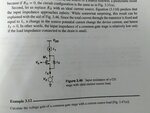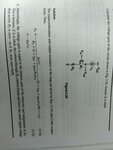samster19
Newbie
Hi all,
I had a slight confusion about how a current source load influences the intrinsic gain of a MOS after seeing the images below.
In the first image, the gain is intuitive. The current source load exhibits an infinite output impedance so that the effective Zout is equal to r0. Here, using KCL I assume that the current flowing through r0 is I0-gmVgs, but the total current through Rs is I0, which means there is no small signal increment.
In the second image, for a common gate amplifier, he says that the total current through the device M1 is from the ideal source I1, so that the source potential cannot change the current through the device. This would mean that there is no small signal current increment. Would this mean the gain is zero?


I had a slight confusion about how a current source load influences the intrinsic gain of a MOS after seeing the images below.
In the first image, the gain is intuitive. The current source load exhibits an infinite output impedance so that the effective Zout is equal to r0. Here, using KCL I assume that the current flowing through r0 is I0-gmVgs, but the total current through Rs is I0, which means there is no small signal increment.
In the second image, for a common gate amplifier, he says that the total current through the device M1 is from the ideal source I1, so that the source potential cannot change the current through the device. This would mean that there is no small signal current increment. Would this mean the gain is zero?

